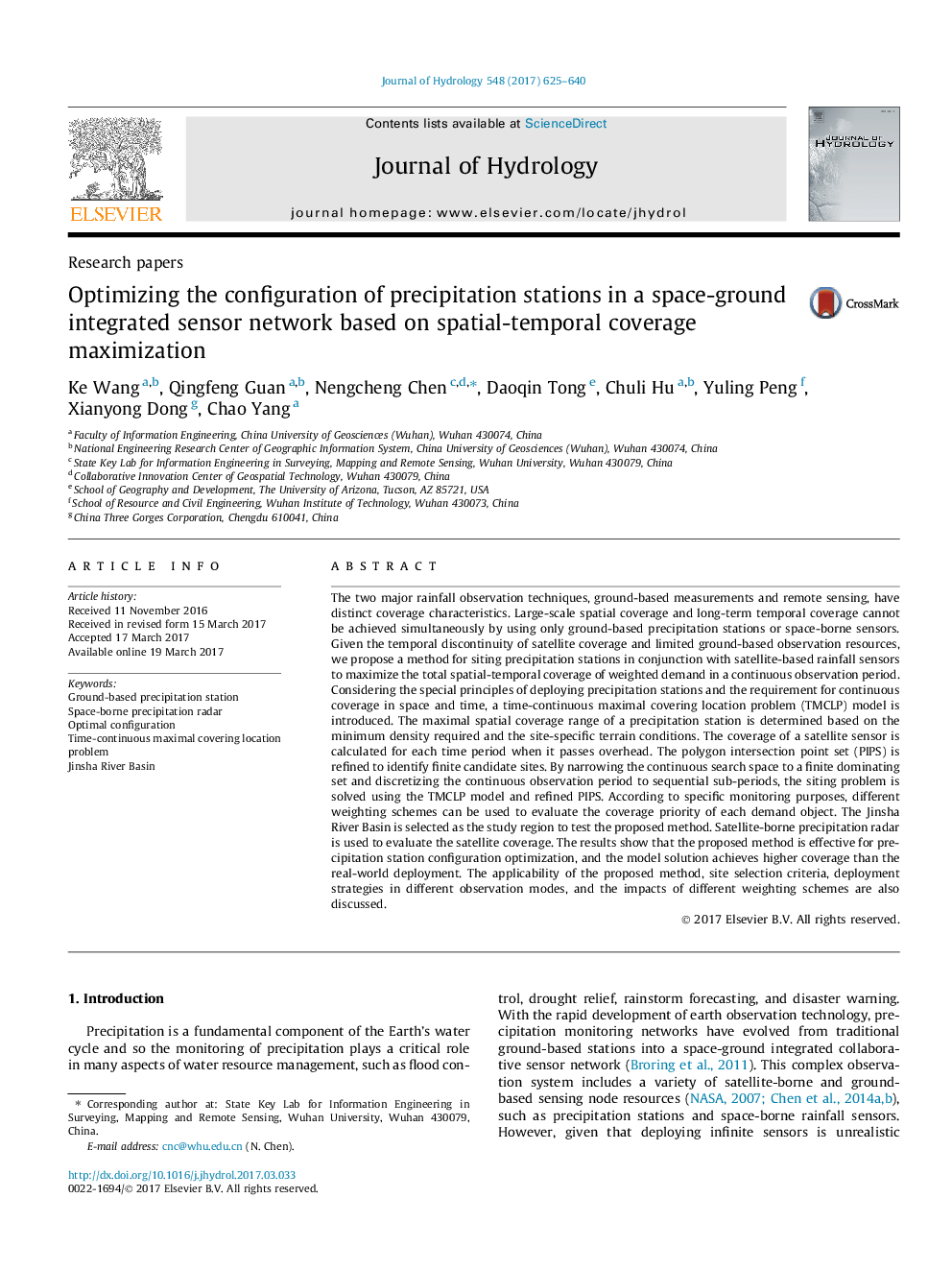| کد مقاله | کد نشریه | سال انتشار | مقاله انگلیسی | نسخه تمام متن |
|---|---|---|---|---|
| 5771254 | 1629906 | 2017 | 16 صفحه PDF | دانلود رایگان |

- We proposed a method for siting precipitation stations considering satellites.
- We formulated a time-continuous maximal covering location model (T-MCLP).
- Terrain and site suitability were considered in identifying candidate locations.
- The proposed method can be extended to serve different monitoring purposes.
- We presented optimal deployment strategies for a space-ground rainfall network.
The two major rainfall observation techniques, ground-based measurements and remote sensing, have distinct coverage characteristics. Large-scale spatial coverage and long-term temporal coverage cannot be achieved simultaneously by using only ground-based precipitation stations or space-borne sensors. Given the temporal discontinuity of satellite coverage and limited ground-based observation resources, we propose a method for siting precipitation stations in conjunction with satellite-based rainfall sensors to maximize the total spatial-temporal coverage of weighted demand in a continuous observation period. Considering the special principles of deploying precipitation stations and the requirement for continuous coverage in space and time, a time-continuous maximal covering location problem (TMCLP) model is introduced. The maximal spatial coverage range of a precipitation station is determined based on the minimum density required and the site-specific terrain conditions. The coverage of a satellite sensor is calculated for each time period when it passes overhead. The polygon intersection point set (PIPS) is refined to identify finite candidate sites. By narrowing the continuous search space to a finite dominating set and discretizing the continuous observation period to sequential sub-periods, the siting problem is solved using the TMCLP model and refined PIPS. According to specific monitoring purposes, different weighting schemes can be used to evaluate the coverage priority of each demand object. The Jinsha River Basin is selected as the study region to test the proposed method. Satellite-borne precipitation radar is used to evaluate the satellite coverage. The results show that the proposed method is effective for precipitation station configuration optimization, and the model solution achieves higher coverage than the real-world deployment. The applicability of the proposed method, site selection criteria, deployment strategies in different observation modes, and the impacts of different weighting schemes are also discussed.
Journal: Journal of Hydrology - Volume 548, May 2017, Pages 625-640